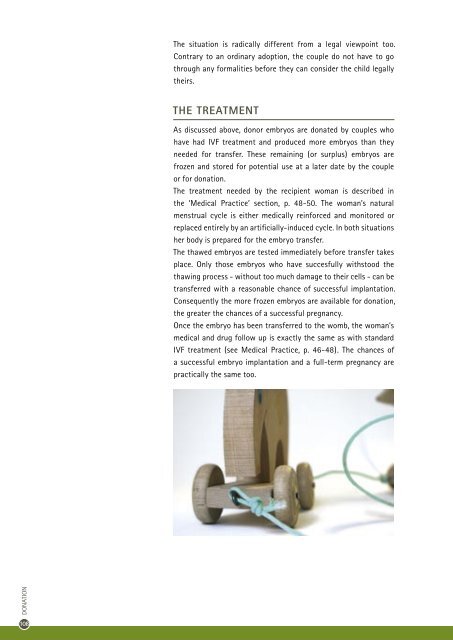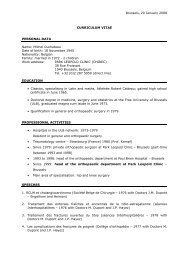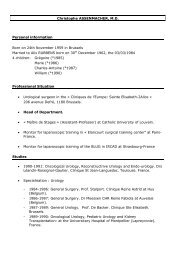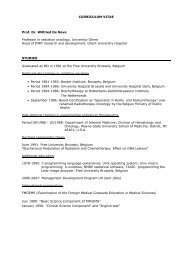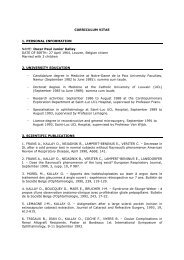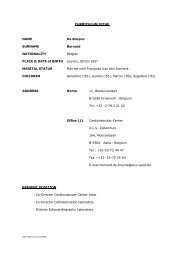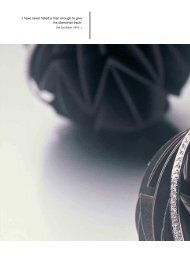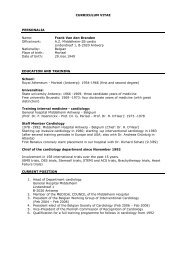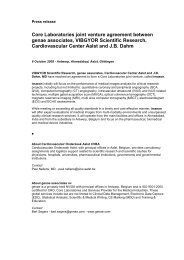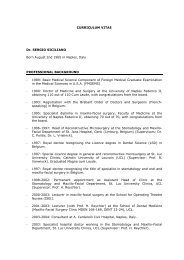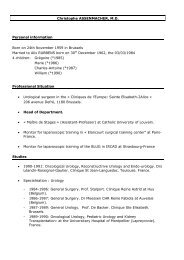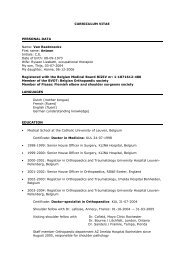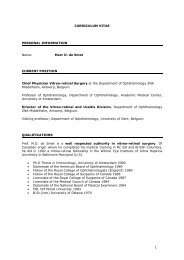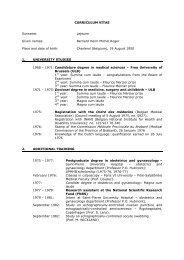Download PDF - HealthCare Belgium
Download PDF - HealthCare Belgium
Download PDF - HealthCare Belgium
Create successful ePaper yourself
Turn your PDF publications into a flip-book with our unique Google optimized e-Paper software.
The situation is radically different from a legal viewpoint too.<br />
Contrary to an ordinary adoption, the couple do not have to go<br />
through any formalities before they can consider the child legally<br />
theirs.<br />
THE TREATMENT<br />
As discussed above, donor embryos are donated by couples who<br />
have had IVF treatment and produced more embryos than they<br />
needed for transfer. These remaining (or surplus) embryos are<br />
frozen and stored for potential use at a later date by the couple<br />
or for donation.<br />
The treatment needed by the recipient woman is described in<br />
the ‘Medical Practice’ section, p. 48-50. The woman’s natural<br />
menstrual cycle is either medically reinforced and monitored or<br />
replaced entirely by an artificially-induced cycle. In both situations<br />
her body is prepared for the embryo transfer.<br />
The thawed embryos are tested immediately before transfer takes<br />
place. Only those embryos who have succesfully withstood the<br />
thawing process - without too much damage to their cells - can be<br />
transferred with a reasonable chance of successful implantation.<br />
Consequently the more frozen embryos are available for donation,<br />
the greater the chances of a successful pregnancy.<br />
Once the embryo has been transferred to the womb, the woman’s<br />
medical and drug follow up is exactly the same as with standard<br />
IVF treatment (see Medical Practice, p. 46-48). The chances of<br />
a successful embryo implantation and a full-term pregnancy are<br />
practically the same too.<br />
DONATION<br />
108


